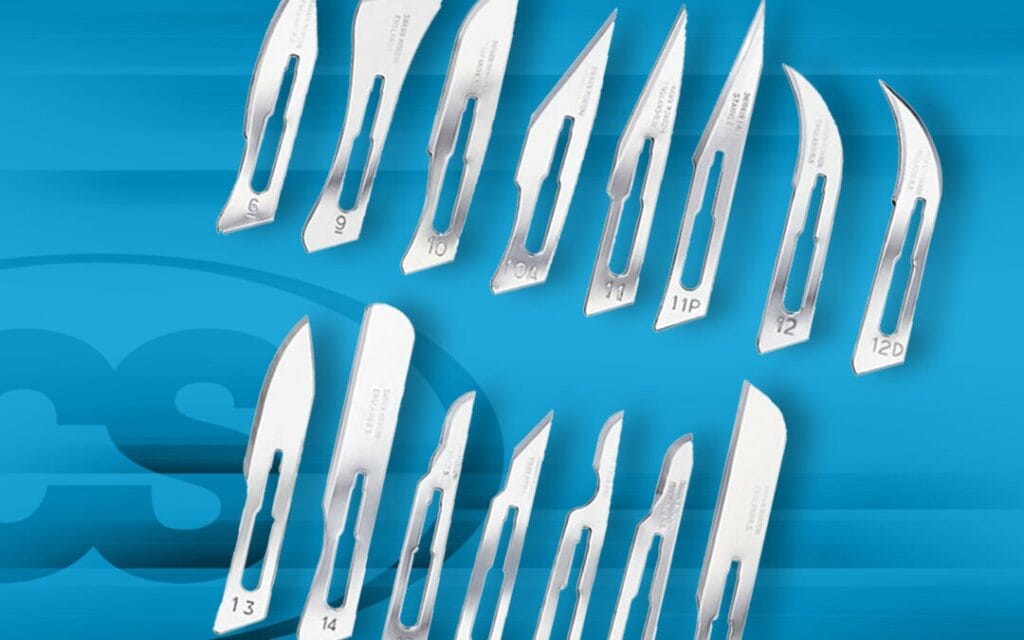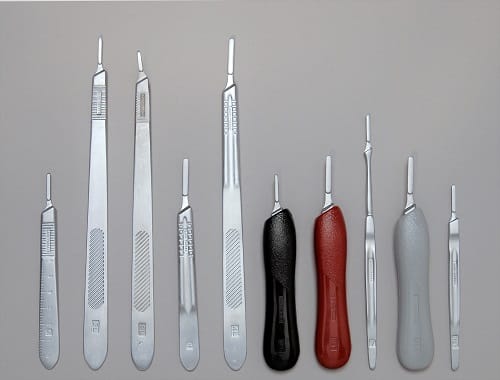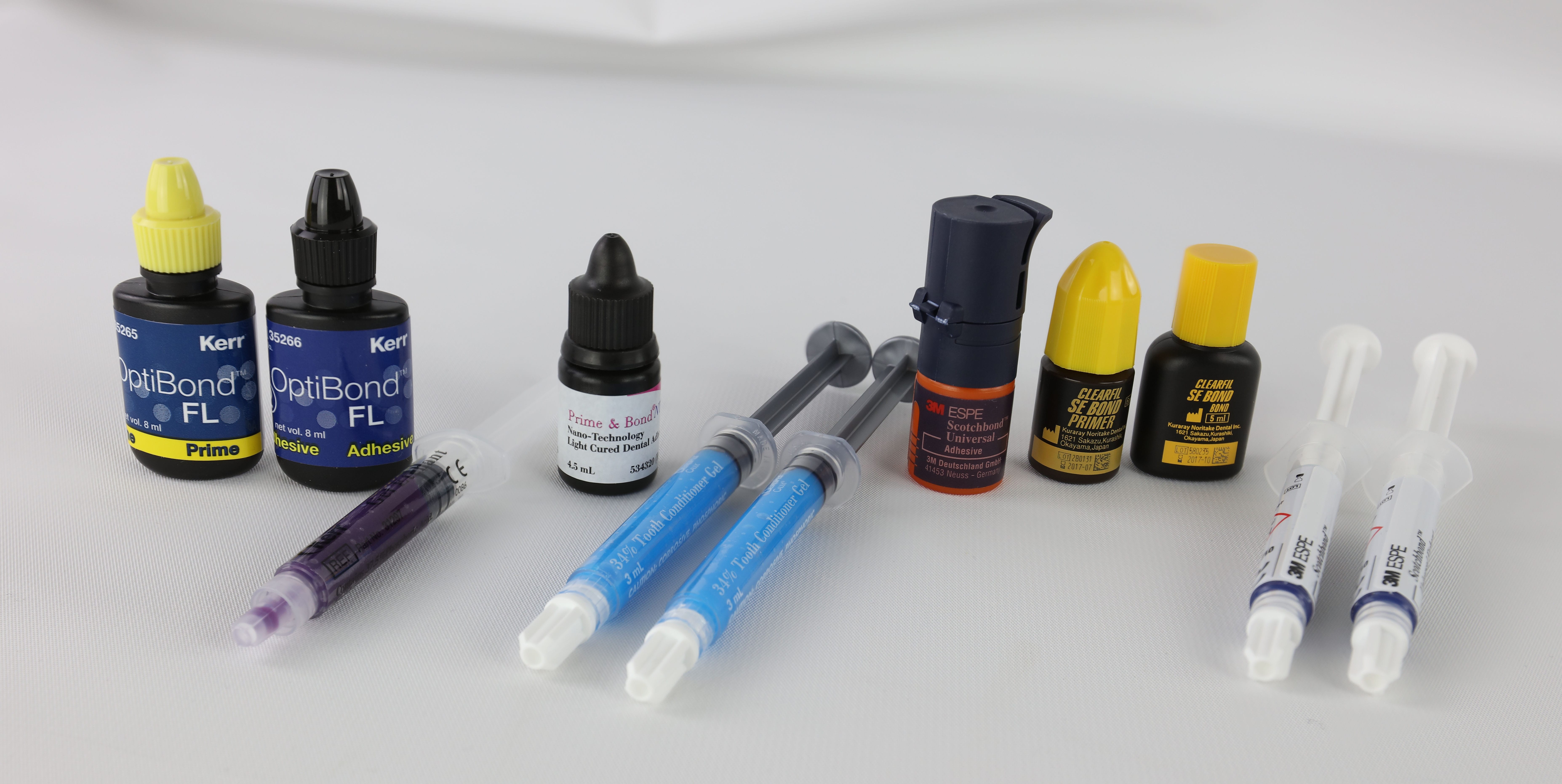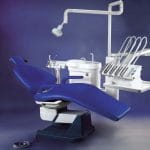In the world of dentistry, precision is not just important; it is essential. Every procedure, from routine cleanings to intricate oral surgeries, requires meticulous attention to detail. At the core of this pursuit of excellence are two indispensable tools: dental surgical blades and scalpels. This comprehensive guide will delve into the various facets of these vital instruments, equipping dental professionals with insights to elevate their practice.
The Evolution of Dental Surgical Blades
The journey of dental surgical blades is a remarkable testament to human ingenuity and relentless advancement. From the primitive flint and obsidian knives of prehistoric times to the finely crafted steel blades we use today, these tools have undergone significant transformation.
In ancient times, dental procedures were often rudimentary. It wasn’t until metallurgy emerged that true surgical blades began to take shape, paving the way for sophisticated dental practices. Today’s instruments are crafted from high-quality materials, ensuring unmatched sharpness and durability.
Types of Dental Surgical Blades
Dental surgical blades come in various shapes and sizes, each meticulously designed for specific procedures and anatomical considerations. Understanding these nuances is crucial for delivering optimal patient care.

Common Blade Types and Their Uses
| Blade Number | Description | Common Uses |
|---|---|---|
| 10 | Traditional blade with a large curved edge | Cutting soft tissues; making large incisions |
| 11 | Triangular-shaped with a sharp tip | Stab incisions; small cuts in recessed areas |
| 12 | Small crescent-shaped pointed blade | Suture cutting |
| 15 | Small curved cutting edge | Precision cuts; periodontal surgeries |
| 22 | Larger version of blade #10 | Large incisions on thick skin |
Specialized Dental Blades
In addition to standard blades, specialized variations exist for specific dental procedures:
- 15C Blade: Flatter and thinner, ideal for delicate areas like alar folds and periorbital regions.
- 15T Blade: Features a short rounded cutting edge with an angled point, perfect for fine procedures in hands and feet.
- Sabre D/15 Blade: A closed-edged blade with a small cutting edge, useful for small incisions in delicate areas.
Materials and Manufacturing
The quality of dental surgical blades is significantly influenced by the materials used and the manufacturing process:
- Stainless Steel: Known for excellent corrosion resistance and durability.
- Carbon Steel: Offers exceptional sharpness and edge retention.
- High Carbon Stainless Steel: Combines the benefits of both stainless and carbon steel.
Advanced manufacturing techniques, including automated grinding and proprietary polishing processes, ensure consistent cutting edges and ergonomic handling.
Scalpel Handles: The Perfect Pairing
While blades provide the cutting edge, dental scalpels serve as the handles that secure these blades in place, allowing for precise control. Like the blades themselves, dental scalpels come in various designs tailored to specific applications:
Common Scalpel Handle Types
- #3 Handle: The most widely used, featuring a flat shape with a serrated grip for enhanced control.
- #7 Handle: Narrow and slender, ideal for intricate maneuvering in tight spaces.
- #3L Handle: Provides extra length for deep surgical procedures.
Sterilization and Safety Protocols
Adhering to proper sterilization and safety protocols is paramount when working with dental surgical blades and scalpels. Dental practices must follow strict guidelines to maintain high standards of infection control and patient safety.

Sterilization Process
- Cleaning: Thoroughly clean reusable handles after each use.
- Packaging: Use proper packaging to maintain sterility.
- Sterilization: Employ autoclaving or other validated sterilization methods.
Safety Measures
- Utilize specialized blade removal devices to minimize accidental injuries.
- Dispose of used blades in designated sharps containers.
- Implement safety protocols for handling instruments during procedures.
Applications in Modern Dentistry
Dental surgical blades and scalpels play crucial roles across various dental specialties:
Periodontology
Periodontists utilize these instruments for treatments such as:
- Root scaling and planing
- Periodontal surgery
- Implant surgery
Oral and Maxillofacial Surgery
These tools are essential for:
- Reconstructive surgery of the face
- Facial trauma surgery
- Oral cavity procedures
Cosmetic Dentistry
While primarily focused on aesthetic improvements, cosmetic dentists employ surgical blades for:
- Gum contouring
- Preparation for veneers or crowns
- Facial aesthetic surgical procedures
Implantology
Precision is vital in implant procedures where surgical blades are used for:
- Incision and flap creation
- Soft tissue management around implants
- Bone grafting procedures
Choosing the Right Blade for Dental Procedures
Selecting the appropriate blade is critical for successful outcomes in dental procedures. Factors to consider include:
- Type of procedure
- Location within the oral cavity
- Tissue characteristics
- Required precision level
- Surgeon’s preference and experience
Innovations and Future Trends
The field of dental surgical instruments is continuously evolving. Emerging trends include:
- Coated Blades: Special coatings enhance sharpness while reducing friction.
- Laser Scalpels: Provide precise cutting with minimal bleeding.
- Disposable Systems: Integrated blade-and-handle systems designed for single-use applications.
- Ergonomic Designs: Handles and blades designed to reduce hand fatigue during lengthy procedures.
Patient Education and Communication
Understanding dental surgical blades and scalpels is crucial not only for professionals but also for patient education. By explaining the roles and applications of different instruments, practitioners can alleviate patient anxiety while fostering trust.
Conclusion
In an ever-evolving landscape, surgical blades and scalpels remain indispensable tools in delivering precise, safe, and effective patient care. From their humble origins to their modern incarnations as finely crafted instruments, these tools have significantly advanced dentistry.
As technology continues to push boundaries, we can expect further innovations in dental surgical instruments. However, the commitment to precision, safety, and excellence will always be at the forefront of dental practice. By staying informed about developments in dental surgical blades and scalpels, professionals can ensure they provide the highest quality care while balancing technological advancement with the timeless art of dentistry.












